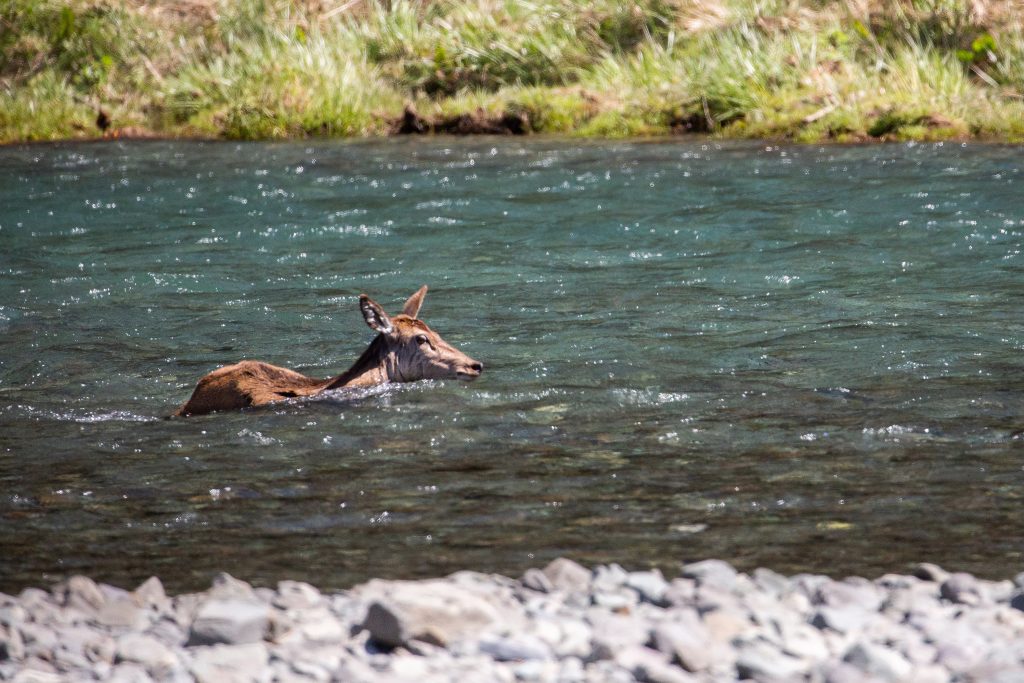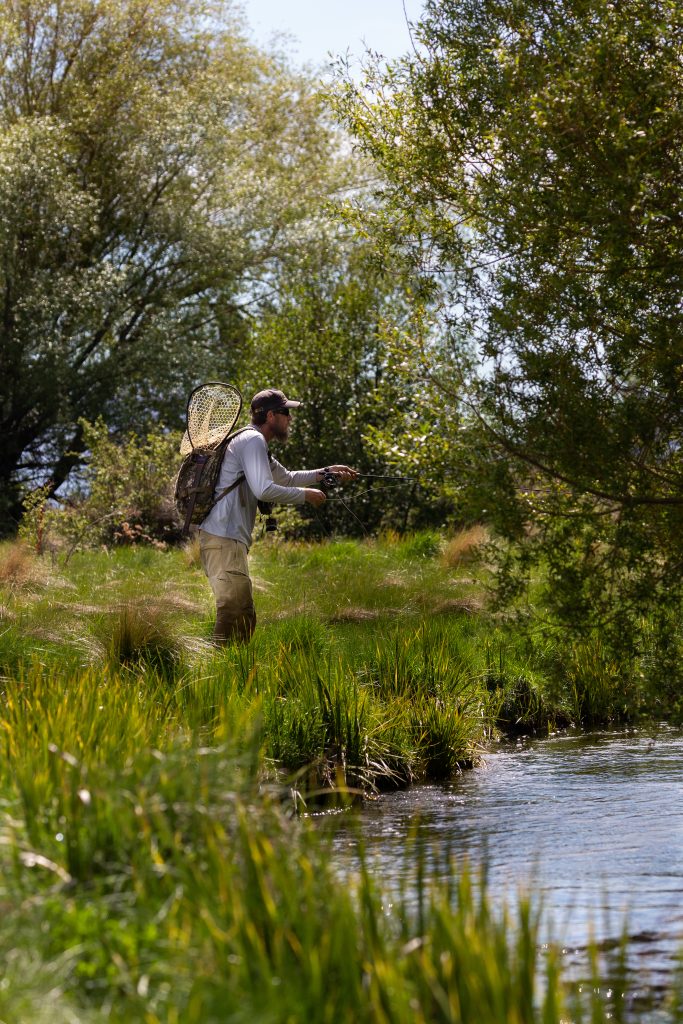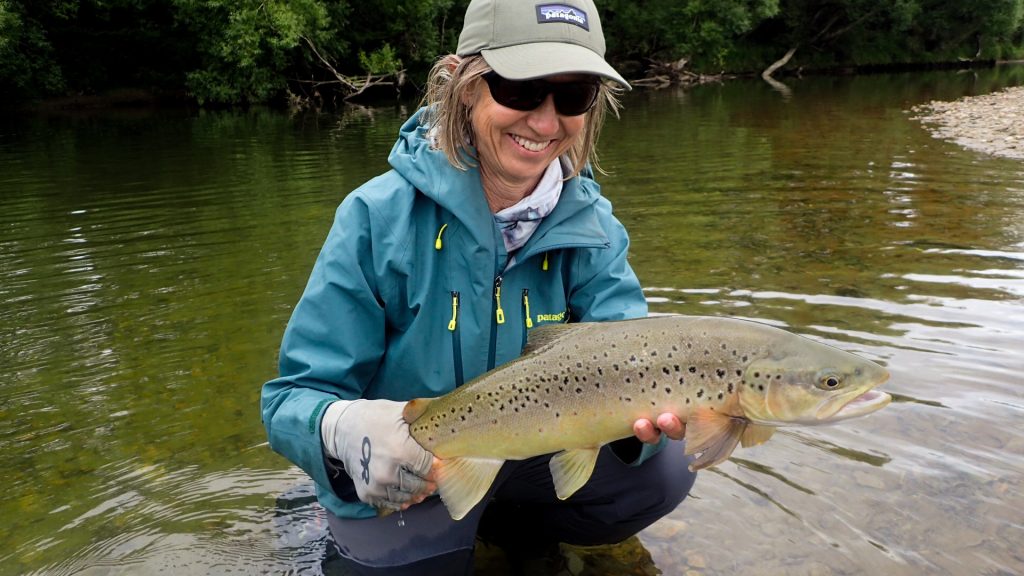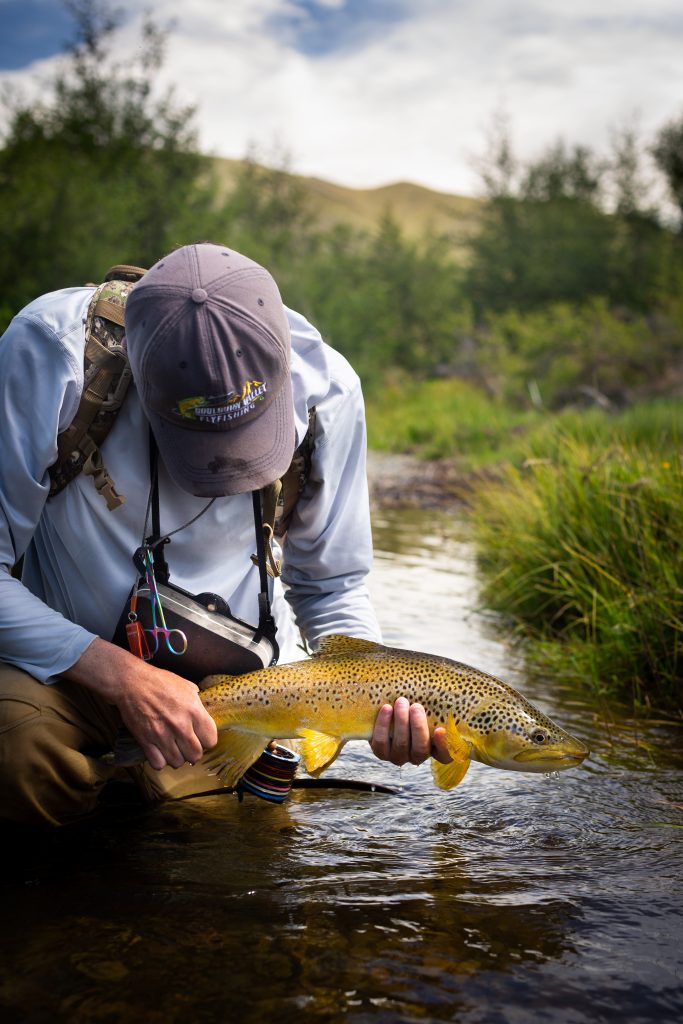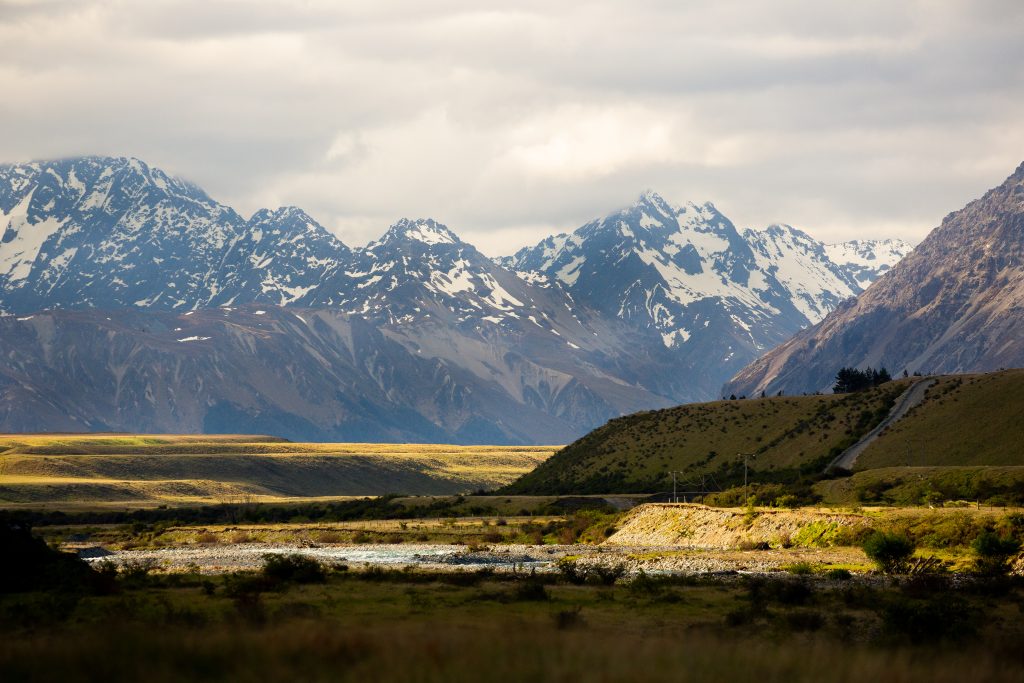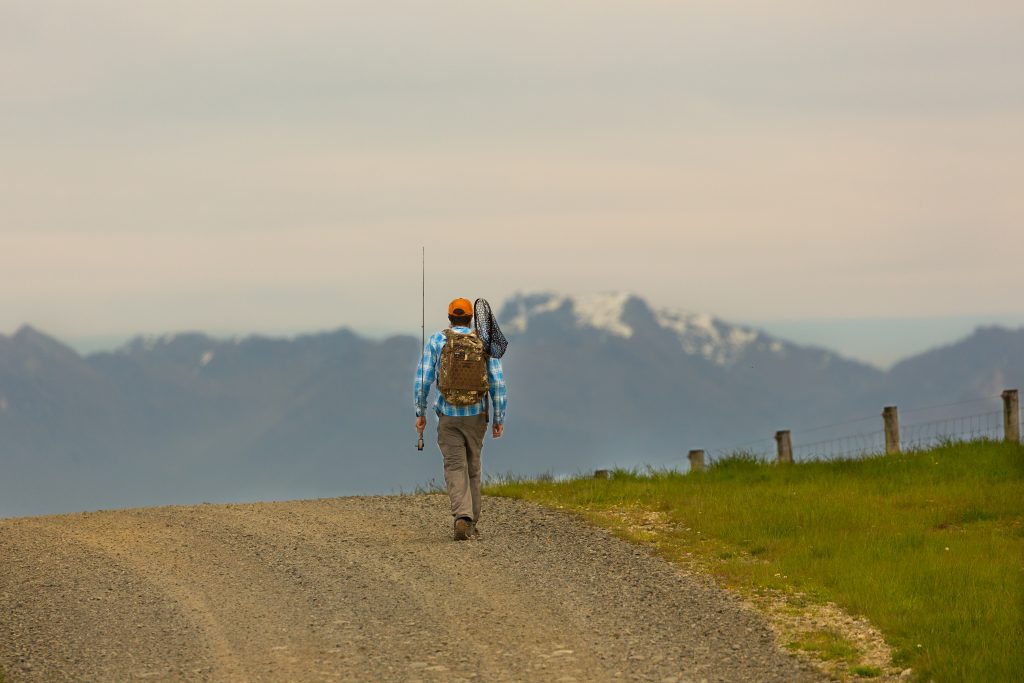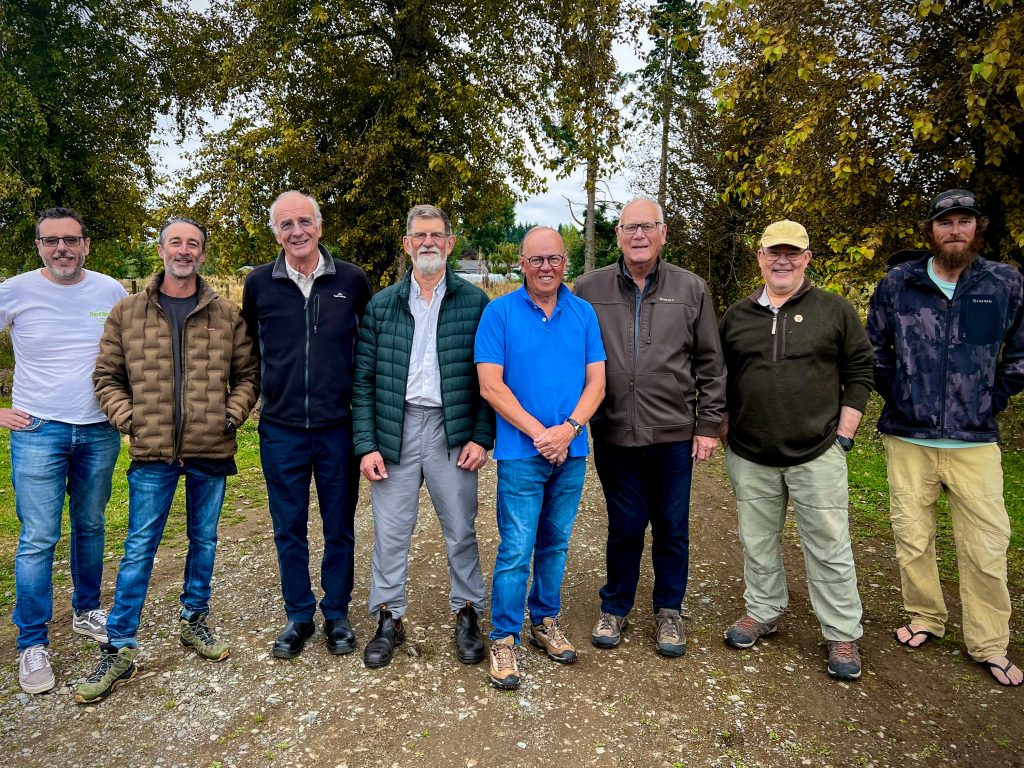New Zealand Season Review 2022-2023
Read on for a brief look at our New Zealand Season Review.
First Touchdown: Fly Fishing Season 2022-2023
In the wake of a global pandemic, the thrill of returning to New Zealand’s pristine waters was a distant memory for most of us. The last season before international travel ceased was in 2019-2020, a time when our final weeks were conducted with the constant hum of news reports threatening to cut short our trips. When we successfully completed the season, relief washed over us just as the situation back home escalated. Little did we foresee the two-year hiatus that lay ahead.
Navigating the Turbulent Waters
The anticipation of the 2022-2023 season was like a breath of fresh air. Putting the pandemic behind us, we finally had a green light for international travel, and we could commit to our clients with certainty. Bookings came pouring in, signalling the return to some sense of normality.
Yet, the effects of the pandemic remained. Every aspect of planning was hindered by exponential cost increases. Everything from food to fuel to flights had risen markedly, and there was no way around this new fact of life. Many of the businesses we had dealt with for years, were no longer operating. And accommodation across all of Southland, an area already starved of lodging options, shrunk significantly.
The pandemic had a huge impact on this region that relies so heavily on international tourists and it will be some years until it fully recovers.
When Plan B Becomes Plan A
The original plan was to start our New Zealand trips in January, just as we do each year. However, Mother Nature had not read the play book. With the Goulburn Valley plagued by flooding, a result of Goulburn Murray Water’s failure to adequately manage the water levels in Lake Eildon, and with the South Island enjoying a belt of unseasonably warm November weather, we decided to seize the opportunity for ourselves and head off on an impromptu fishing trip.
But more than it being a simple fishing trip, it was a chance to reclaim our mental wellbeing and set aside thoughts of the situation on the Goulburn. It was an opportunity to find some balance and serenity when everything at home was disrupted and chaotic.
With dreamlike weather conditions awaiting us, this unexpected trip served as a beacon of hope for our clients. Those who were hesitant about travelling to New Zealand could now see that travel across the Tasman had returned to normal, and that the fishing was just as good as ever. This trip signified not just our return to the South Island, but some hope that life as we once knew it was recommencing.
Immersing in the Southland Experience
The picturesque Southland region greeted us with perfect weather conditions for the first few days of our trip. A lack of available accommodation led us to Te Anau, a departure from our usual farmhouse near Mossburn that was inaccessible due to renovation works in progress. From Te Anau we explored the Eglington, Waiau, and Whitestone rivers, as well as a few nearby lakes. The wealth of quality fishing was astounding, and our efforts were rewarded with plenty of dry fly eats. The thrill of wading crystal clear rivers amidst a backdrop of jagged peaks, a stark reminder of what we had been missing over these past few years of masks and lockdowns.
Our trip was marked by some unexpected wildlife encounters. One involved a wounded deer that we pushed out of the open grasslands of the Eglinton valley. Despite its broken pelvis, the animal managed to cross the fast-flowing river to safety. I have seen a lot of things in my time on the water, but this ranks up there with the most fascinating. We expected it be swept away to its demise at any moment, but somehow it made it to the other side.
Mother nature is something to behold.
Returning to the Familiar and Venturing into the Unknown
There’s a comforting sense of familiarity that keeps pulling us back to our traditional summer home: the farm at Dunrobin. On the way there, we stopped at the Oreti River which presented us with all sorts of challenges. The main ones being higher than anticipated water levels, and a low ceiling of cloud cover that made sight fishing a futile prospect. While other guides had reportedly achieved some success using tiny nymphs on long, fine leaders, we decided to stick to our ‘dry fly’ guns and keep moving. We weren’t guiding on this trip, so we chose to enjoy the freedom that comes with fishing purely for pleasure. Thus, we aimed the car towards the Aparima, Mataura, and several unnamed creeks in the region.
The reward was greater than we could have imagined, with the size and condition of the fish surpassing previous years. The Aparima, in particular, delivered solid 4-6lb browns, though the better fish were well-spaced out, only really occupying the premium slots in amongst miles of shallow runs.
But we were not just returning to the familiar. We were also eager to venture into the unknown, exploring new waters, something you just can’t do with paying clients in tow. We took the opportunity to investigate a range of rivers that we had previously marked on maps but never visited. While our adventurous endeavours paid off. Some of these long-wondered about blue lines were complete misses. Either too shallow, or too marginal. Yet a couple were true hidden gems that offered great fishing with no sign that other anglers had recently visited.

The Fickle Game of Weather
With the forecast predicting a robust cold front, we decided to move north where conditions were supposedly going to be better. Timing one’s travel to coincide with bad weather events is a time-honoured, fly fishing tradition, and a good way of mimising wasted fishing time, but the ever-present lure of having a cast saw us stopping by an old favourite location near Wanaka. Regrettably, the squally winds and torrential rain proved too much, thwarting our attempts to spot fish to cast at.
Undeterred, we journeyed onwards to Omarama, where we spent a few days exploring in all directions. A standout was the feeder streams of the Tekapo River, offering excellent early season dry fly opportunities. The main rivers weren’t fished due to excessive water levels, and the Ahuriri remained closed to angling. But it was the smaller streams that provided us with excellent fishing to sighted, rising browns.
About this time, the improving weather and subsequent rising demand for drift boating beckoned us home to Australia. Our short trip to New Zealand complete, we headed back to Alexandra ready to tackle the season on the Goulburn head on.
Back In NZ – With Clients
When it was time for our summer New Zealand trips to commence, the eagerness among both our guide team, and customers, was palpable. It had been a while since many of our clients had set foot on the South Island. As expected, the fishing followed the normal trajectory for a dry year. It began well, with good water levels and relatively easy fishing. But as the weeks rolled on, water levels dropped, making the fishing more challenging in the ever-clearer, ever-dropping rivers.
By early March you had to do most things right in order to catch the better fish.
The weather was very dry and warm in Southland this summer. So much so that it was not uncommon to hear farmer’s speaking of bores running dry and having to dig deeper wells. This is the way when we in Australia have wet summers, they have drier/warmer conditions. Because of this, finding rivers with colder water became our top priority. We found refuge in several spring creeks and certain streams that have deep, shaded pools and plenty of riffles that provide highly oxygenated water. While most of the angling crowds were funnelled onto the larger rivers, a normal plan of attack in times of drought. As the smaller streams get lower and warmer, it’s only natural to fall back onto the larger rivers of the valleys. But it was the smaller streams that delivered us consistently excellent fly fishing, without crowds, in the summer of 2023.
While rivers are our main focus, the lakes were also good, especially on the worst weather days. While we didn’t fish them often, they were the saviour on several occasions with 3 – 6 lb trout being caught on days when quality sight fishing on the rivers wouldn’t have been possible.
Challenges on Renowned Waters
Because of the low water levels, the larger, more famous rivers such as the Mataura were bustling with anglers from the USA, Europe, Japan, and Australia. Unfortunately, the Cattle Flat section was withdrawn from public access some time ago, making finding a beat increasingly challenging on some days. Fishing in this area requires either an early start and staying ahead of the game, sometimes arriving hours early, well before the fish are up and feeding. Or a completely different strategy, that we will keep to ourselves for the benefit of our clients. Either way, those use to fishing the Mataura or Oreti will have to continue to adapt in order to be able to fish some of the more well known rivers this coming season.
While on this topic, I should say that I don’t believe that Fish and Game’s proposed changes to the regulations will produce the intended outcomes. Without a booking system and proper enforcement at every access point, every day; it will fail in reducing angler pressure, and will therefore, equate to just another tax on international anglers.
This of course, is up to Fish and Game, and they have the right to run their fishery in any way they see fit. My opinion on the matter is that while no one wants to spend more than necessary, an extra $40 per day to fish the Mataura on the 1-2 days you might fish it in a given week, is not exorbitant. When you take into consideration the expense of flights, car hire, accommodation, meals, guide fees, an extra $40 per day isn’t much. That’s just my personal observation. I also think this will be the norm right across New Zealand as time advances. I think the approach used in parts of Montana where some rivers are off-limits to non-residents on weekends probably makes more sense if reducing pressure and meeting the needs of local anglers is the goal. But this was considered and rejected by Fish and Game.
The Charm of Lesser-Fished Streams
The relative anonymity of some streams played to our advantage this season. Small streams across the region provided plenty of opportunities to fish waters that receive next to no angling pressure. They shall remain unnamed in order to protect their status as lightly fished.
I can, however, mention the Waiau as both a well-known but lesser fished river. In line with the water situation right across Southland, it was running low, and was another ace up the sleeve for us this season. Its character as a wide tailwater that often experiences massive releases of water from the upstream dam made the low levels a welcome change. As twilight settled in, caddis and mayfly began to pop in hatches that often lasted for a couple of hours, extending our sessions well into the night. We caught lots of fish between 2 – 4 lb during these sessions, as well as a few up to 5.5 lb. Once again this was fishing dry flies and emerger patterns to rising fish.
Not all groups chose this path, some preferring the warmth of a fireside whisky back home. Yet, many seized the opportunity, opting for an early dinner in Te Anau before indulging in the twilight fishing spectacle.
A Day to Remember
Among the multitude of fishing days, one stood out above the rest. It unfolded with Cameron and his group of clients. One member of the group grappled with an old knee injury, warranting a lighter day of one-on-one guiding with Mitch. Meanwhile, Cameron led the rest to the Oreti, where each angler managed to net a large brown. An early dinner at a pizzeria in Te Anau replenished their energy before they embarked on an evening session on the Waiau where the fish were rising.
Their adventure ended late into the night, but the memories etched into their minds made the physical effort worthwhile. This remarkable day underscored our commitment to flexibility and our dedication to ensuring every individual enjoys their time with us. And yes, the clients slept in the following morning.
The Perfect Conclusion and Anticipation for What’s Next
The final week of our season saw us in the company of just two anglers – a loyal regular now residing in Alexandra, and a passionate fly fisher who journeyed all the way from Germany. Their camaraderie offered the perfect conclusion to our annual ten-week stint in New Zealand.
Looking forward to next year, 2024 marks our 30th year in business. We pride ourselves in delivering highly personalised seven-day NZ trips, prioritising stellar fly fishing and the shared experiences within a small group of fellow enthusiasts. Most of the fishing is with dry flies, and our guides double as instructors, deeply invested in your success and growth as fly fishers.
We extend an invitation to you for summer 2024. Grab a friend, form a group, or take the plunge solo on this special trip. The unforgettable experience is priced well within reach, but please note, with inflation continuing to rise, the trip price will increase by $300 AUD on July 1st.
To learn more about these trips, please Click Here to visit our New Zealand trip page, and keep watching this blog and our socials for plenty of updates from our Montana trips starting later this month.
NZ Bookings at the Time of Writing
Week 1:
- Join an American College professor and golfing enthusiast, a seasoned fly fisher with excellent fitness. Don’t miss this opportunity to fish alongside an experienced angler.
Week 4:
- We have a single spot remaining for a 59-year-old woman of moderate fitness, who is relatively new to fly fishing. She’s open to fishing with anyone and eager to learn and explore the sport.
Other Weeks:
- The availability for the remaining weeks varies. However, there are two weeks with ample availability for a group of four:
- Week 2: SUN 14 JAN – SUN 21 JAN
- Week 10: SUN 10 MAR – SUN 17 MAR
Click Here to see the latest details
| DATES | AVAILABILITY | |
|---|---|---|
| 1 | SUN 7 JAN – SUN 14 JAN | 1 Spot left |
| 2 | SUN 14 JAN – SUN 21 JAN | 4 Spots left |
| 3 | SUN 21 JAN – SUN 28 JAN | BOOKED OUT |
| 4 | SUN 28 JAN – SUN 4 FEB | 1 Spot left |
| 5 | SUN 4 FEB – SUN 11 FEB | BOOKED OUT |
| 6 | SUN 11 FEB – SUN 18 FEB | BOOKED OUT |
| 7 | SUN 18 FEB – SUN 25 FEB | BOOKED OUT |
| 8 | SUN 25 FEB – SUN 3 MAR | 3 Spots left |
| 9 | SUN 3 MAR – SUN 10 MAR | 2 spots left |
| 10 | SUN 10 MAR – SUN 17 MAR | 4 spots left |
 New Zealand Season Review
New Zealand Season Review
 New Zealand Season Review
New Zealand Season Review New Zealand Season Review
New Zealand Season Review New Zealand Season Review
New Zealand Season Review New Zealand Season Review
New Zealand Season Review New Zealand Season Review
New Zealand Season Review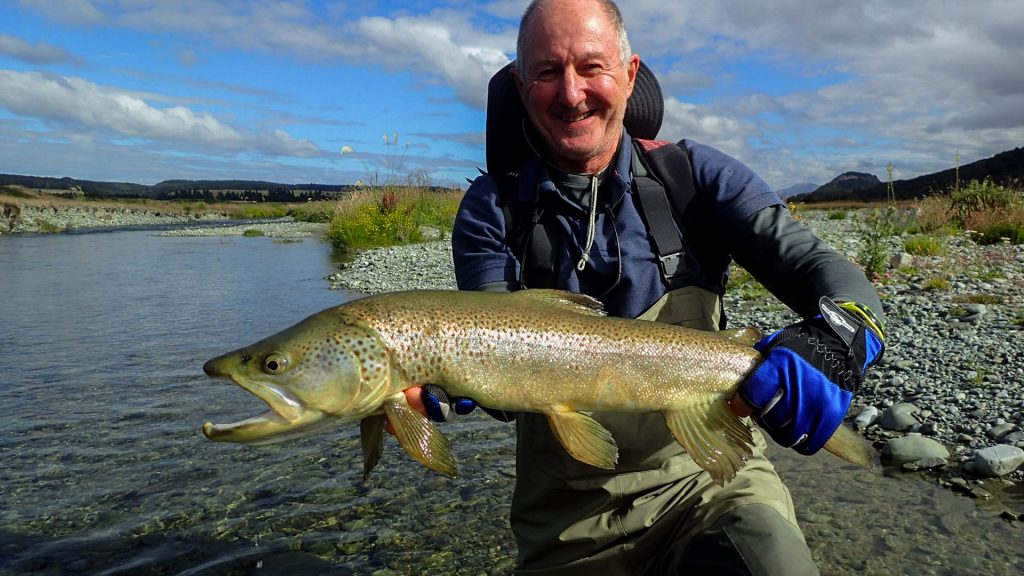 New Zealand Season Review
New Zealand Season Review New Zealand Season Review
New Zealand Season Review New Zealand Season Review
New Zealand Season Review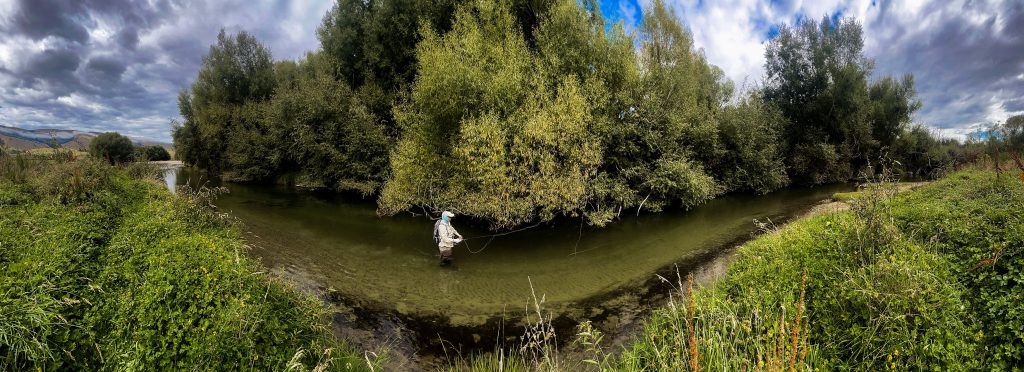

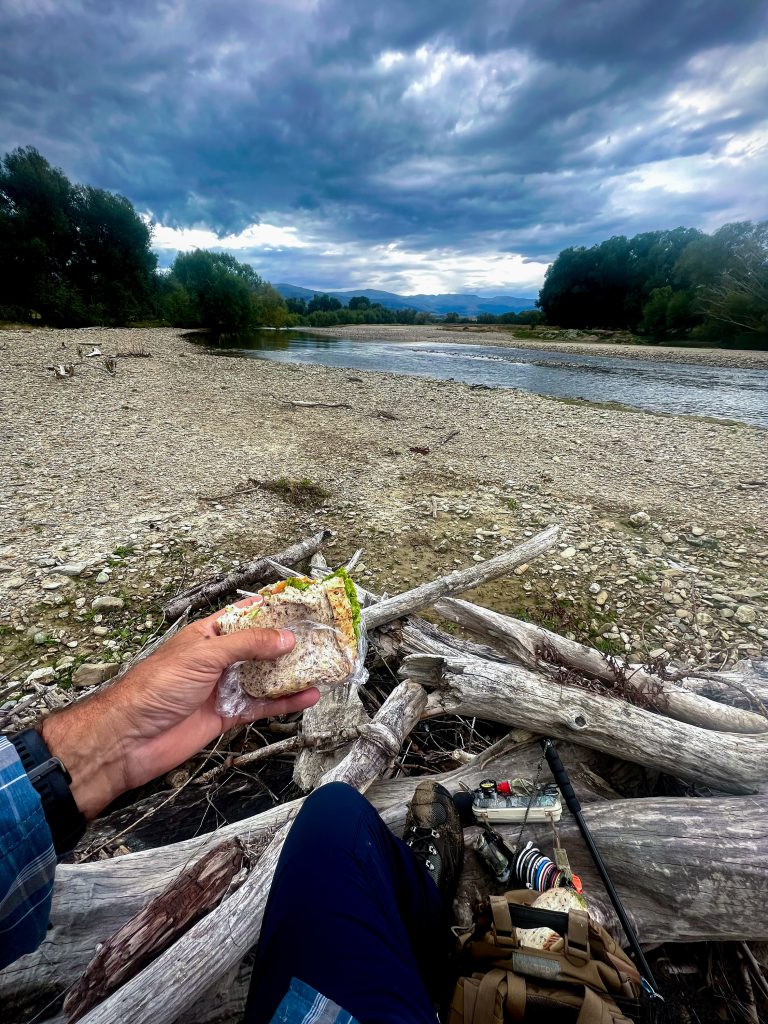

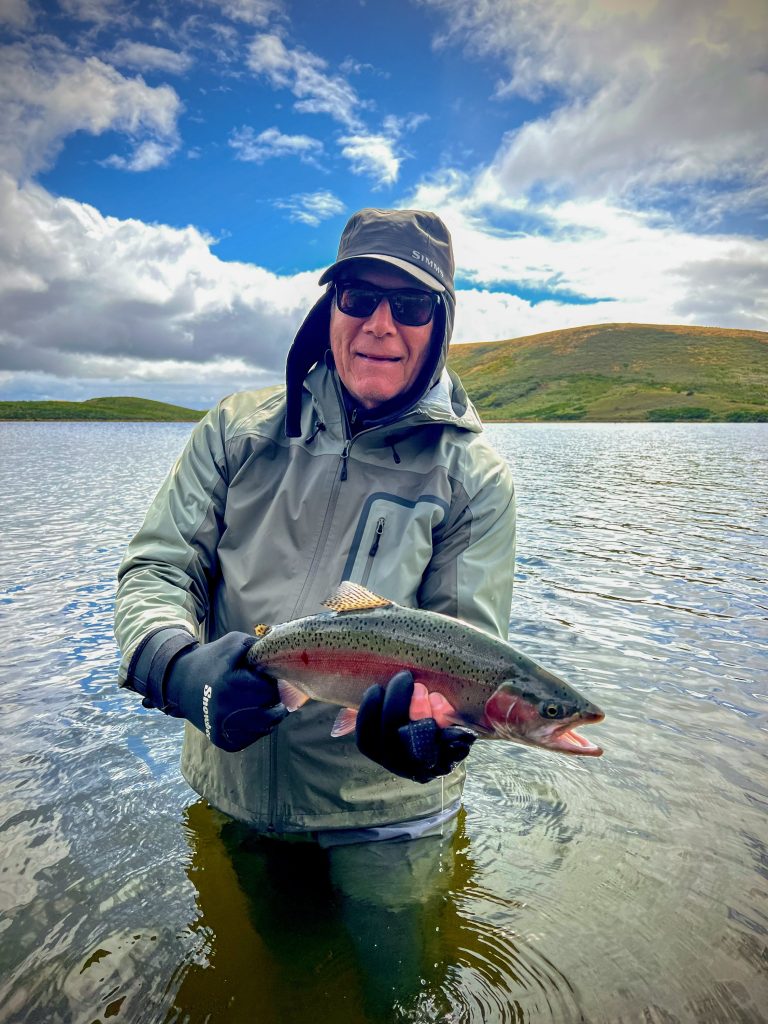


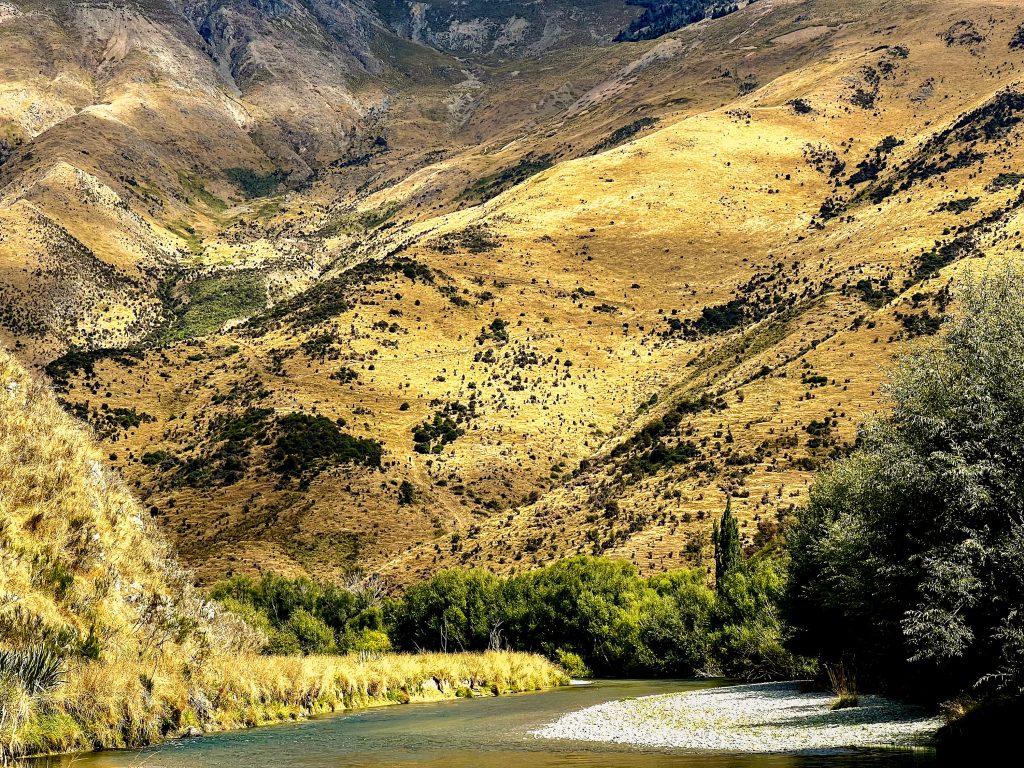
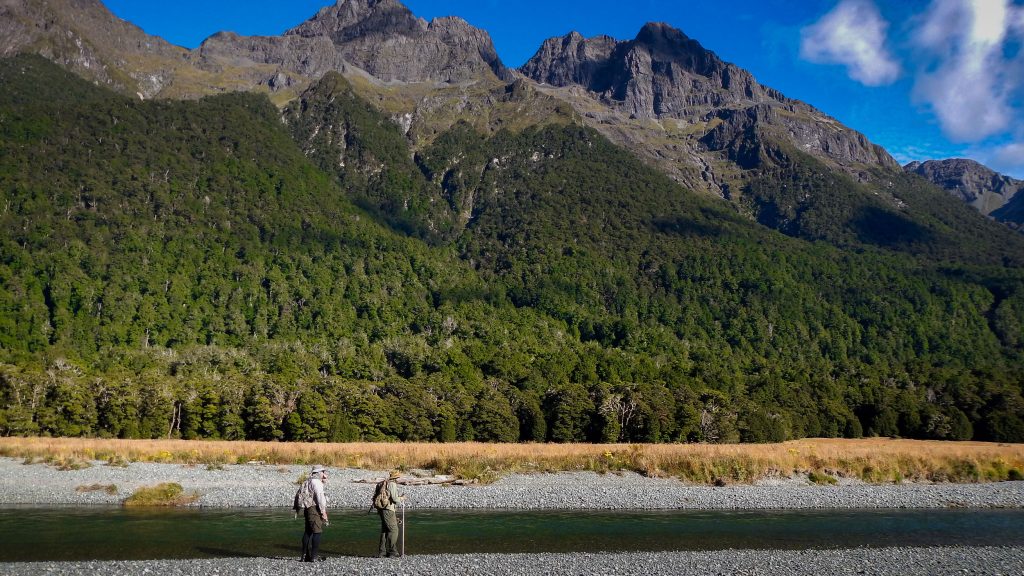
New Zealand Season Review
New Zealand Season Review
New Zealand Season Review
New Zealand Season Review
New Zealand Season Review


